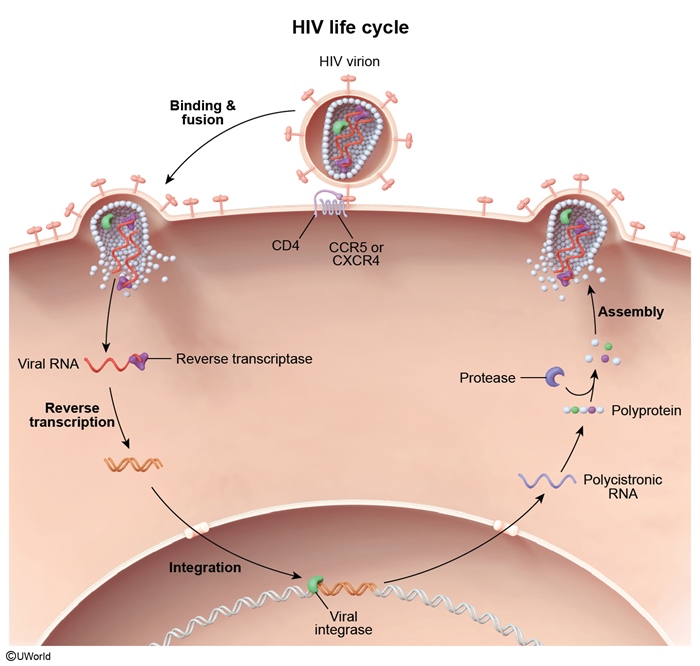HIV Lifecycle
Article Sections
Introduction
The human immunodeficiency virus (HIV) primarily targets and destroys the immune system's CD4 T cells. As a retrovirus, HIV carries its genetic information in RNA, which is reverse-transcribed into DNA on infection. This process allows the virus to integrate its genetic material into the host cell's DNA, establishing a persistent infection that weakens the immune system and predisposes to opportunistic infections and malignancies.
Modes of transmission
HIV is primarily transmitted through the exchange of body fluids. The most common routes of transmission include:
- Sexual transmission: Unprotected vaginal, anal, or oral sex is the most common mode of transmission. The risk for sexual transmission is greatest when mucosal disruption is present. The risk for transmission with vaginal intercourse is lower than with receptive anal intercourse (virus passage through the thin rectal epithelium).
Continue Learning with UWorld
Get the full HIV Lifecycle article plus rich visuals, real-world cases, and in-depth insights from medical experts, all available through the UWorld Medical Library.
Figures

Figure 1